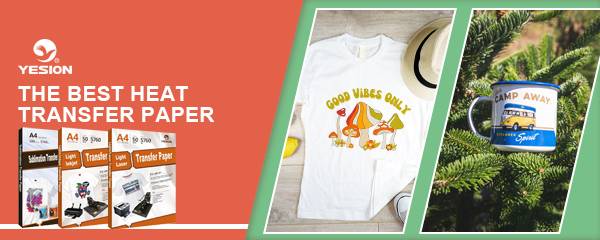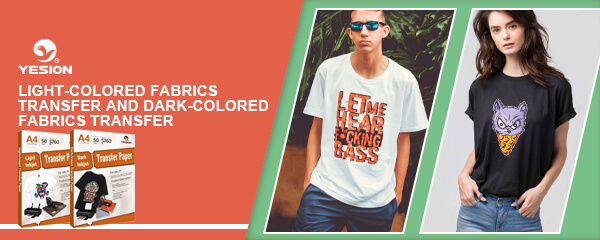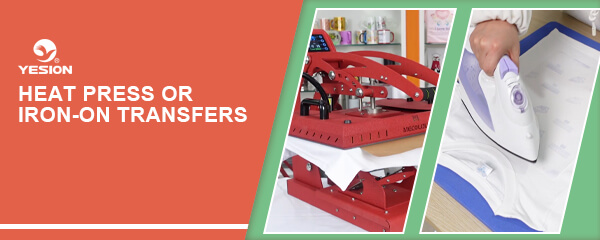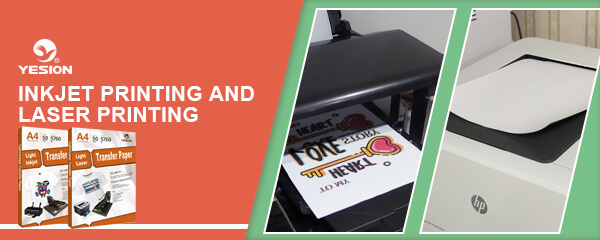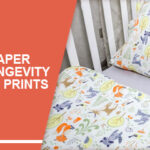
How does sublimation paper affect the longevity of sublimated prints?
2023-09-15
Inkjet transfer paper and laser transfer paper
2023-09-22Heat transfer paper is a popular medium used in various industries, including fashion, crafts, and promotional products. It allows for the transfer of designs, images, and text onto different surfaces using heat and pressure. As the demand for heat transfer paper continues to grow, it’s essential to stay updated on the best options available in the market.
Heat Transfer Paper: A Buyer’s Guide
What Is Heat Transfer Paper?
Heat transfer paper is a specialized type of paper that is used in a printing method called heat transfer printing. It is designed to transfer printed designs onto various surfaces, such as fabric, ceramic, or metal, using heat and pressure. Heat transfer paper is commonly used in crafts, DIY projects, and commercial printing applications.
The process of using heat transfer paper involves printing a design onto the paper using an inkjet or laser printer. The design is then transferred onto the desired surface by applying heat and pressure. The heat activates the ink on the paper, causing it to adhere to the surface. Once the transfer is complete, the paper is removed, leaving behind the printed design.
Type of Best Heat Transfer Paper
Light Transfer Paper: This type of heat transfer paper is designed for use on light-colored fabrics. It works by transferring the design with vibrant colors and a transparent background, allowing the base color of the fabric to show through.
Dark Transfer Paper: Dark transfer paper is specifically designed for use on dark-colored fabrics. It has a white background that provides a base for the printed design, ensuring that the colors appear vivid and opaque on dark surfaces.
Sublimation Transfer Paper: Sublimation transfer paper is used in a specialized printing process called sublimation printing. It is used to transfer designs onto polyester or polymer-coated substrates. Sublimation printing involves the use of heat to convert the ink into a gas, which then permeates the surface of the substrate, resulting in a permanent, vibrant, and durable print.
How to choose the right transfer paper?
Choosing the right transfer paper for your needs is crucial to ensure successful and high-quality transfers. Here are some factors to consider when selecting the most suitable transfer paper:
Transfer Method: Determine the transfer method you plan to use, such as heat press or iron-on transfers. Some transfer papers are specifically designed for one method or the other, so make sure the paper you choose is compatible with your preferred transfer method.
Fabric or Surface Type: Consider the type of fabric or surface you will be transferring the design onto. Transfer papers come in different variations for various materials like cotton, polyester, blends, dark fabrics, light fabrics, and hard surfaces like ceramics or wood. Ensure that the transfer paper is suitable for the specific material you are working with to achieve optimal results.
Color of the Design and Fabric: If you are working with colored designs or colored fabrics, you need to choose transfer paper that is appropriate for those specific combinations. Some transfer papers are designed for light-colored fabrics, while others are suitable for dark-colored fabrics. Using the wrong transfer paper can result in colors not showing up as intended or the design not adhering properly.
Desired Finish: Consider the finish you want for your transfers. Transfer papers are available in different finishes, such as matte, glossy, or metallic. The finish can affect the appearance and durability of the transferred design. Choose the finish that aligns with your desired outcome.
Printer Compatibility: Check the compatibility of the transfer paper with your printer. Some transfer papers work well with both inkjet and laser printers, while others are specifically designed for one type of printer. Ensure that the transfer paper is compatible with your printer to achieve optimal printing quality.
Ease of Use: Consider the ease of use and level of expertise required with the transfer paper. Some papers may require specific handling, temperature settings, or additional steps for successful transfers. If you are a beginner, choose transfer paper that is user-friendly and comes with clear instructions.
Quality and Durability
Color Vibrancy: Look for heat transfer paper that provides vibrant and true-to-color prints. High-quality papers will retain the integrity of the design without fading or bleeding.
Washability: Consider the durability of the transferred design. Ensure that the heat transfer paper can withstand repeated washing and maintain its quality over time.
Stretch and Softness: If you’re working with fabrics, choose heat transfer paper that offers good stretch and maintains a soft feel after the transfer. This will ensure comfort and longevity of the design on the fabric.
Ease of Use
Transfer Process: Consider the ease of use and level of expertise required with the transfer paper. Some papers may require specific handling, temperature settings, or additional steps for successful transfers. If you are a beginner, choose transfer paper that is user-friendly and comes with clear instructions.
Instructions and Support: Check if the heat transfer paper comes with clear instructions and guidelines for optimal usage. Some manufacturers provide online resources and customer support to assist users in achieving the best results.
Quantity and Cost
Quantity: Determine the quantity of heat transfer paper you need based on your project size or production requirements. Consider purchasing in bulk to save costs in the long run. Yesion is a transfer paper factory that has been producing digital printing consumables for many years.
Cost: Compare the prices of different heat transfer paper brands and types, considering factors such as quality, compatibility, and durability. Remember that investing in higher-quality paper may yield better results and cost savings in the long term.
By considering these factors, you can make an informed decision when purchasing heat transfer paper. Remember to follow the manufacturer’s instructions and experiment with different settings and techniques to achieve the best results with your chosen heat transfer paper.

